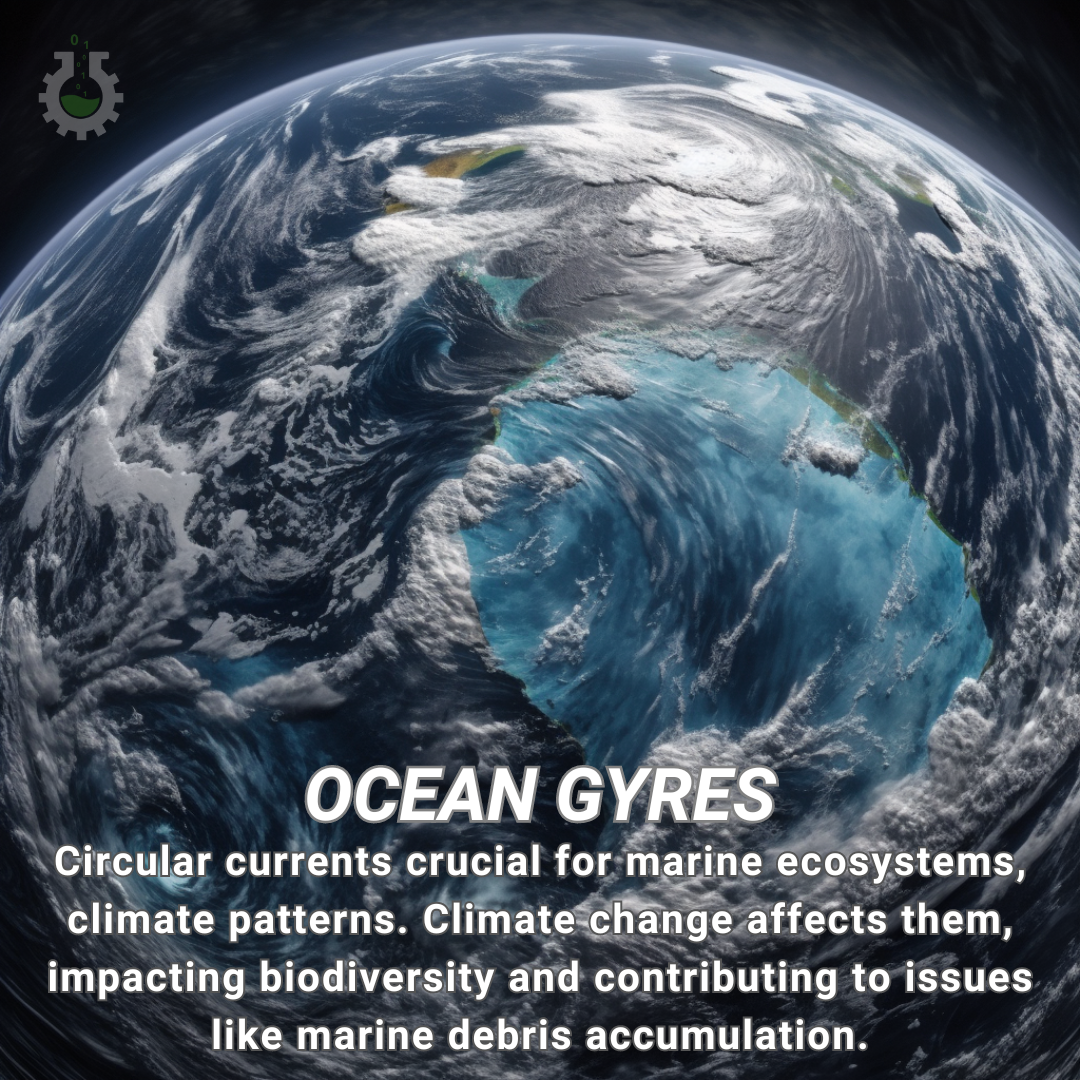February 5, 2024
Climate Change Poster Collection of the Day – Ocean Gyres
Book a Demo
Today’s Climate Change Poster Collection highlights Ocean Gyres. The mysteries of the deep, blue sea never cease to intrigue, and one such fascinating phenomenon is the ocean gyre. These are large systems of rotating ocean currents that are formed by global wind patterns, Earth’s rotation, and forces such as the Coriolis effect, planetary vorticity, and friction. These forces interact to create these immense, swirling bodies of water that help to shape our planet’s climate and marine ecosystems.
There are five major ocean gyres in our world: the North and South Pacific Subtropical Gyres, the North and South Atlantic Subtropical Gyres, and the Indian Ocean Subtropical Gyre. Each of these gyres has unique characteristics and is found in different parts of the world, contributing to a diverse array of oceanic environments.
The direction of the gyres’ rotation is determined by their location. In the Northern Hemisphere, these gyres circulate in a clockwise direction, while in the Southern Hemisphere, they rotate counterclockwise. This is due to the Coriolis effect and the phenomenon known as Ekman transport, which are both influenced by the rotation of the Earth.
Ocean gyres serve a crucial purpose in driving the “ocean conveyor belt” or the thermohaline circulation. This vast, underwater current plays a significant role in regulating temperature, salinity, and nutrient flow throughout the world’s oceans. This circulation is essential for maintaining the health and diversity of marine life.
The biological productivity of gyres, however, can greatly vary. Subtropical gyres are often referred to as “ocean deserts” due to their low productivity. In contrast, subpolar gyres can exhibit high biological activity due to nutrient-rich upwelling, a process where colder, nutrient-dense water rises to replace warmer surface water.
In addition to their biological importance, gyres also contribute to the Geostrophic Flow of the ocean. This is a part of the overall ocean circulation model of the Earth, which influences global climate patterns and helps to distribute heat across the planet.
However, the impact of human activities on these gyres has led to environmental concerns. Marine debris and plastic pollution, largely a result of human activity, have formed garbage patches within these gyres. These floating islands of waste pose significant threats to marine ecosystems and biodiversity.
The most notable example of these garbage patches is the Great Pacific garbage patch, situated between the western and eastern garbage patches. This enormous collection of floating debris is a stark reminder of the impact human actions can have on the world’s oceans and the urgent need for more sustainable practices.
Ocean gyres are complex and vital components of our planet’s oceanic and climatic systems. As we continue to study and understand these phenomena, it is crucial that we also take steps to protect and preserve them for future generations.
Discover an inspiring collection of climate change poster.



